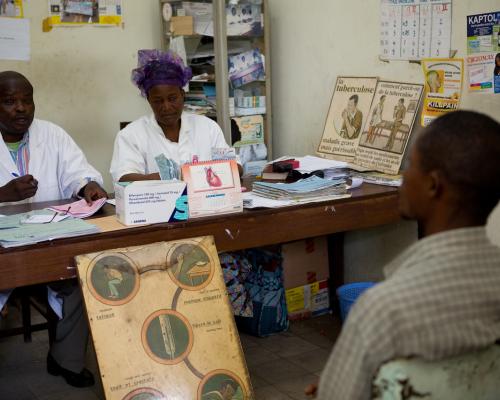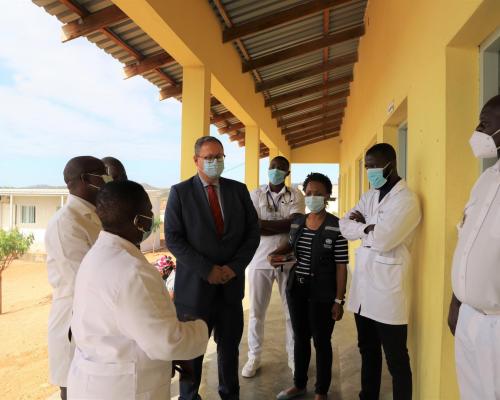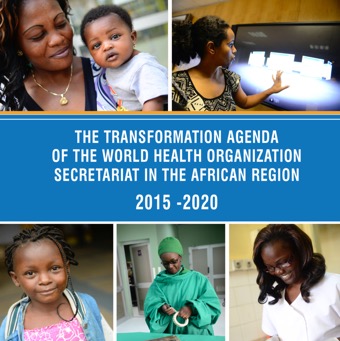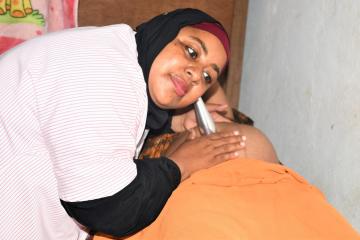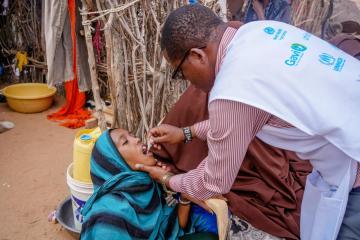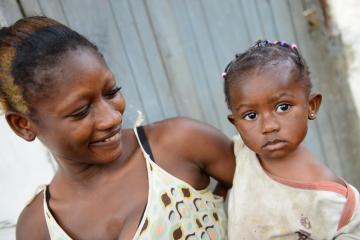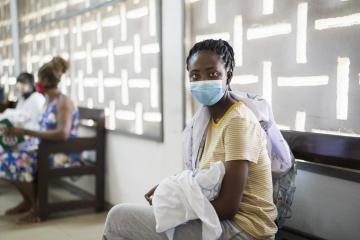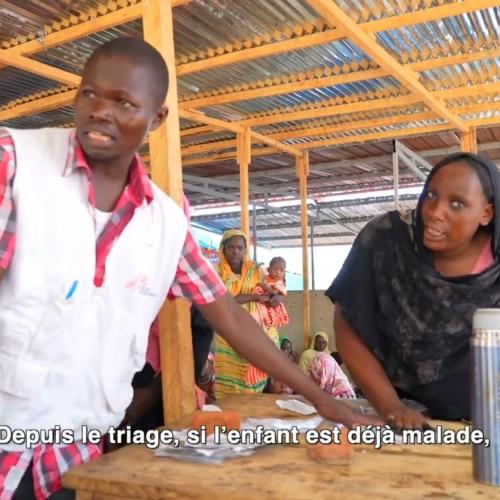Factsheet: Child maltreatment
Key Facts
- A quarter of all adults report having been physically abused as children.
- One in 5 women and 1 in 13 men report having been sexually abused as a child.
- Consequences of child maltreatment include impaired lifelong physical and mental health, and the social and occupational outcomes can ultimately slow a country's economic and social development.
- Preventing child maltreatment before it starts is possible and requires a multisectoral approach.
- Effective prevention programmes support parents and teach positive parenting skills.
- Ongoing care of children and families can reduce the risk of maltreatment reoccurring and can minimize its consequences.
Child maltreatment is the abuse and neglect that occurs to children under 18 years of age. It includes all types of physical and/or emotional ill-treatment, sexual abuse, neglect, negligence and commercial or other exploitation, which results in actual or potential harm to the child’s health, survival, development or dignity in the context of a relationship of responsibility, trust or power. Exposure to intimate partner violence is also sometimes included as a form of child maltreatment.
Factsheet: Pneumonia
Key facts
- Pneumonia accounts for 16% of all deaths of children under 5 years old, killing 920 136 children in 2015.
- Pneumonia can be caused by viruses, bacteria, or fungi.
- Pneumonia can be prevented by immunization, adequate nutrition, and by addressing environmental factors.
- Pneumonia caused by bacteria can be treated with antibiotics, but only one third of children with pneumonia receive the antibiotics they need.
Pneumonia is a form of acute respiratory infection that affects the lungs. The lungs are made up of small sacs called alveoli, which fill with air when a healthy person breathes. When an individual has pneumonia, the alveoli are filled with pus and fluid, which makes breathing painful and limits oxygen intake.
Pneumonia is the single largest infectious cause of death in children worldwide. Pneumonia killed 920 136 children under the age of 5 in 2015, accounting for 16% of all deaths of children under five years old. Pneumonia affects children and families everywhere, but is most prevalent in South Asia and sub-Saharan Africa. Children can be protected from pneumonia, it can be prevented with simple interventions, and treated with low-cost, low-tech medication and care.
Factsheet: Children -- reducing mortality
Key facts
- 5.9 million children under the age of 5 years died in 2015.
- More than half of these early child deaths are due to conditions that could be prevented or treated with access to simple, affordable interventions.
- Leading causes of death in children under 5 years are preterm birth complications, pneumonia, birth asphyxia, diarrhoea and malaria. About 45% of all child deaths are linked to malnutrition.
- Children in sub-Saharan Africa are more than 14 times more likely to die before the age of 5 than children in developed regions.
A child's risk of dying is highest in the neonatal period, the first 28 days of life. Safe childbirth and effective neonatal care are essential to prevent these deaths. 45% of child deaths under the age of 5 years take place during the neonatal period.
Preterm birth, intrapartum-related complications (birth asphyxia or lack of breathing at birth), and infections cause most neonatal deaths. From the end of the neonatal period and through the first 5 years of life, the main causes of death are pneumonia, diarrhoea and malaria. Malnutrition is the underlying contributing factor in about 45% of all child deaths, making children more vulnerable to severe diseases.
Overall, substantial progress has been made towards achieving Millennium Development Goal (MDG) 4. Since 1990 the global under-5 mortality rate has dropped from 91 deaths per 1000 live births in 1990 to 43 in 2015. But the rate of this reduction in under-5 mortality was insufficient to reach the MDG target of a two-thirds reduction of 1990 mortality levels by the year 2015.
Factsheet: Infant and young child feeding
Key facts
- Every infant and child has the right to good nutrition according to the "Convention on the Rights of the Child".
- Undernutrition is associated with 45% of child deaths.
- Globally in 2015, 156 million children under 5 were estimated to be stunted (too short for age), 50 million were estimated to be wasted (too thin for height), and 42 million were overweight or obese.
- About 43% of infants 0–6 months old are exclusively breastfed.
- Few children receive nutritionally adequate and safe complementary foods; in many countries less than a fourth of infants 6–23 months of age meet the criteria of dietary diversity and feeding frequency that are appropriate for their age.
- Over 800 000 children's lives could be saved every year among children under 5 years, if all children 0–23 months were optimally breastfed . Breastfeeding improves IQ, school attendance, and is associated with higher income in adult life. 1
- Improving child development and reducing health costs through breastfeeding results in economic gains for individual families as well as at the national level.
Factsheet: Diarrhoeal disease
Key facts
- Diarrhoeal disease is the second leading cause of death in children under five years old. It is both preventable and treatable.
- Each year diarrhoea kills around 525 000 children under five.
- A significant proportion of diarrhoeal disease can be prevented through safe drinking-water and adequate sanitation and hygiene.
- Globally, there are nearly 1.7 billion cases of childhood diarrhoeal disease every year.
- Diarrhoea is a leading cause of malnutrition in children under five years old.
Scope of the problem
Child maltreatment is a global problem with serious life-long consequences. In spite of recent national surveys in several low- and middle-income countries, data from many countries are still lacking.
Child maltreatment is complex and difficult to study. Current estimates vary widely depending on the country and the method of research used. Estimates depend on:
- the definitions of child maltreatment used;
- the type of child maltreatment studied;
- the coverage and quality of official statistics;
- the coverage and quality of surveys that request self-reports from victims, parents or caregivers.
Nonetheless, international studies reveal that a quarter of all adults report having been physically abused as children and 1 in 5 women and 1 in 13 men report having been sexually abused as a child. Additionally, many children are subject to emotional abuse (sometimes referred to as psychological abuse) and to neglect.
Every year, there are an estimated 41 000 homicide deaths in children under 15 years of age. This number underestimates the true extent of the problem, as a significant proportion of deaths due to child maltreatment are incorrectly attributed to falls, burns, drowning and other causes.
In armed conflict and refugee settings, girls are particularly vulnerable to sexual violence, exploitation and abuse by combatants, security forces, members of their communities, aid workers and others.
Child maltreatment causes suffering to children and families and can have long-term consequences. Maltreatment causes stress that is associated with disruption in early brain development. Extreme stress can impair the development of the nervous and immune systems. Consequently, as adults, maltreated children are at increased risk for behavioural, physical and mental health problems such as:
- perpetrating or being a victim of violence
- depression
- smoking
- obesity
- high-risk sexual behaviours
- unintended pregnancy
- alcohol and drug misuse.
Via these behavioural and mental health consequences, maltreatment can contribute to heart disease, cancer, suicide and sexually transmitted infections.
Beyond the health and social consequences of child maltreatment, there is an economic impact, including costs of hospitalization, mental health treatment, child welfare, and longer-term health costs.
A number of risk factors for child maltreatment have been identified. These risk factors are not present in all social and cultural contexts, but provide an overview when attempting to understand the causes of child maltreatment.
Child
It is important to emphasize that children are the victims and are never to blame for maltreatment. A number of characteristics of an individual child may increase the likelihood of being maltreated:
- being either under four years old or an adolescent
- being unwanted, or failing to fulfil the expectations of parents
- having special needs, crying persistently or having abnormal physical features.
Parent or caregiver
A number of characteristics of a parent or caregiver may increase the risk of child maltreatment. These include:
- difficulty bonding with a newborn
- not nurturing the child
- having been maltreated themselves as a child
- lacking awareness of child development or having unrealistic expectations
- misusing alcohol or drugs, including during pregnancy
- being involved in criminal activity
- experiencing financial difficulties.
Relationship
A number of characteristics of relationships within families or among intimate partners, friends and peers may increase the risk of child maltreatment. These include:
- physical, developmental or mental health problems of a family member
- family breakdown or violence between other family members
- being isolated in the community or lacking a support network
- a breakdown of support in child rearing from the extended family.
Community and societal factors
A number of characteristics of communities and societies may increase the risk of child maltreatment. These include:
- gender and social inequality;
- lack of adequate housing or services to support families and institutions;
- high levels of unemployment or poverty;
- the easy availability of alcohol and drugs;
- inadequate policies and programmes to prevent child maltreatment, child pornography, child prostitution and child labour;
- social and cultural norms that promote or glorify violence towards others, support the use of corporal punishment, demand rigid gender roles, or diminish the status of the child in parent–child relationships;
- social, economic, health and education policies that lead to poor living standards, or to socioeconomic inequality or instability.
Preventing child maltreatment requires a multisectoral approach. Effective programmes are those that support parents and teach positive parenting skills. These include:
- visits by nurses to parents and children in their homes to provide support, education, and information;
- parent education, usually delivered in groups, to improve child-rearing skills, increase knowledge of child development, and encourage positive child management strategies; and
- multi-component interventions, which typically include support and education of parents, pre-school education, and child care.
Other prevention programmes have shown some promise.
- Programmes to prevent abusive head trauma (also referred to as shaken baby syndrome, shaken infant syndrome and inflicted traumatic brain injury). These are usually hospital-based programmes targeting new parents prior to discharge from the hospital, informing of the dangers of shaken baby syndrome and advising on how to deal with babies that cry inconsolably.
- Programmes to prevent child sexual abuse. These are usually delivered in schools and teach children about:
- body ownership
- the difference between good and bad touch
- how to recognize abusive situations
- how to say "no"
- how to disclose abuse to a trusted adult.
Such programmes are effective at strengthening protective factors against child sexual abuse (e.g. knowledge of sexual abuse and protective behaviours), but evidence about whether such programmes reduce other kinds of abuse is lacking.
The earlier such interventions occur in children's lives, the greater the benefits to the child (e.g. cognitive development, behavioural and social competence, educational attainment) and to society (e.g. reduced delinquency and crime).
In addition, early case recognition coupled with ongoing care of child victims and families can help reduce reoccurrence of maltreatment and lessen its consequences.
To maximize the effects of prevention and care, WHO recommends that interventions are delivered as part of a four-step public health approach:
- defining the problem;
- identifying causes and risk factors;
- designing and testing interventions aimed at minimizing the risk factors;
- disseminating information about the effectiveness of interventions and increasing the scale of proven effective interventions.
WHO, in collaboration with a number of partners:
- provides technical and normative guidance for evidence-based child maltreatment prevention;
- advocates for increased international support for and investment in evidence-based child maltreatment prevention;
- provides technical support for evidence-based child maltreatment prevention programmes in several low- and middle-income countries.
For more information contact:
WHO Media centre
Telephone: +41 22 791 2222
E-mail: mediainquiries@who.int
Causes
Pneumonia is caused by a number of infectious agents, including viruses, bacteria and fungi. The most common are:
- Streptococcus pneumoniae – the most common cause of bacterial pneumonia in children;
- Haemophilus influenzae type b (Hib) – the second most common cause of bacterial pneumonia;
- respiratory syncytial virus is the most common viral cause of pneumonia;
- in infants infected with HIV, Pneumocystis jiroveci is one of the most common causes of pneumonia, responsible for at least one quarter of all pneumonia deaths in HIV-infected infants.
Pneumonia can be spread in a number of ways. The viruses and bacteria that are commonly found in a child's nose or throat, can infect the lungs if they are inhaled. They may also spread via air-borne droplets from a cough or sneeze. In addition, pneumonia may spread through blood, especially during and shortly after birth. More research needs to be done on the different pathogens causing pneumonia and the ways they are transmitted, as this is of critical importance for treatment and prevention.
The presenting features of viral and bacterial pneumonia are similar. However, the symptoms of viral pneumonia may be more numerous than the symptoms of bacterial pneumonia. In children under 5 years of age, who have cough and/or difficult breathing, with or without fever, pneumonia is diagnosed by the presence of either fast breathing or lower chest wall indrawing where their chest moves in or retracts during inhalation (in a healthy person, the chest expands during inhalation). Wheezing is more common in viral infections.
Very severely ill infants may be unable to feed or drink and may also experience unconsciousness, hypothermia and convulsions.
While most healthy children can fight the infection with their natural defences, children whose immune systems are compromised are at higher risk of developing pneumonia. A child's immune system may be weakened by malnutrition or undernourishment, especially in infants who are not exclusively breastfed.
Pre-existing illnesses, such as symptomatic HIV infections and measles, also increase a child's risk of contracting pneumonia.
The following environmental factors also increase a child's susceptibility to pneumonia:
- indoor air pollution caused by cooking and heating with biomass fuels (such as wood or dung)
- living in crowded homes
- parental smoking.
Pneumonia should be treated with antibiotics. The antibiotic of choice is amoxicillin dispersable tablets. Most cases of pneumonia require oral antibiotics, which are often prescribed at a health centre. These cases can also be diagnosed and treated with inexpensive oral antibiotics at the community level by trained community health workers. Hospitalization is recommended only for severe cases of pneumonia.
Preventing pneumonia in children is an essential component of a strategy to reduce child mortality. Immunization against Hib, pneumococcus, measles and whooping cough (pertussis) is the most effective way to prevent pneumonia.
Adequate nutrition is key to improving children's natural defences, starting with exclusive breastfeeding for the first 6 months of life. In addition to being effective in preventing pneumonia, it also helps to reduce the length of the illness if a child does become ill.
Addressing environmental factors such as indoor air pollution (by providing affordable clean indoor stoves, for example) and encouraging good hygiene in crowded homes also reduces the number of children who fall ill with pneumonia.
In children infected with HIV, the antibiotic cotrimoxazole is given daily to decrease the risk of contracting pneumonia.
The cost of antibiotic treatment for all children with pneumonia in 66 of the countdown to 2015 countries for maternal, newborn and child survival is estimated at around US$ 109 million per year. The price includes the antibiotics and diagnostics for pneumonia management.
The WHO and UNICEF integrated Global action plan for pneumonia and diarrhoea (GAPPD) aims to accelerate pneumonia control with a combination of interventions to protect, prevent, and treat pneumonia in children with actions to:
- protect children from pneumonia including promoting exclusive breastfeeding and adequate complementary feeding;
- prevent pneumonia with vaccinations, hand washing with soap, reducing household air pollution, HIV prevention and cotrimoxazole prophylaxis for HIV-infected and exposed children;
- treat pneumonia focusing on making sure that every sick child has access to the right kind of care -- either from a community-based health worker, or in a health facility if the disease is severe -- and can get the antibiotics and oxygen they need to get well;
A number of countries including Bangladesh, India, Kenya, Uganda and Zambia have developed district, state and national plans to intensify actions for the control of pneumonia and diarrhoea. Many more have integrated diarrhoea and pneumonia specific action into their national child health and child survival strategies. For many countries the post Millenium Development Goal agenda has explicitly included ending preventable diarrhoea and pneumonia deaths as a priority action.
Who is most at risk?
Newborns
2.7 million babies die every year in their first month of life and a similar number are stillborn. Within the first month, up to half of all deaths occur within the first 24 hours of life, and 75% occur in the first week. The 48 hours immediately following birth is the most crucial period for newborn survival. This is when the mother and child should receive follow-up care to prevent and treat illness.
Globally, the number of neonatal deaths declined from 5.1 million in 1990 to 2.7 million in 2015. However, the decline in neonatal mortality from 1990 to 2015 has been slower than that of post-neonatal under-5 mortality: 47% compared with 58% globally. This pattern applies to most low- and middle-income countries. If current trends continue, around half of the 69 million child deaths between 2016 and 2030 will occur during the neonatal period. The share of neonatal deaths is projected to increase from 45% of under-5 deaths in 2015 to 52% in 2030. Moreover, 63 countries need to accelerate progress to reach the Sustainable Development Goal (SDG) target of a neonatal mortality rate of 12 deaths per 1000 live births by 2030.
Prior to birth, a mother can increase her child's chance of survival and good health by attending antenatal care consultations, being immunized against tetanus, and avoiding smoking and use of alcohol.
At the time of birth, a baby's chance of survival increases significantly with delivery in a health facility in the presence of a skilled birth attendant. After birth, essential care of a newborn should include:
- ensuring that the baby is breathing;
- starting the newborn on exclusive breastfeeding right away;
- keeping the baby warm; and
- washing hands before touching the baby.
Identifying and caring for illnesses in a newborn is very important, as a baby can become very ill and die quickly if an illness is not recognized and treated appropriately. Sick babies must be taken immediately to a trained health care provider.
Substantial global progress has been made in reducing child deaths since 1990. The number of under-5 deaths worldwide has declined from 12.7 million in 1990 to 5.9 million in 2015 – 16 000 every day compared with 35 000 in 1990. Since 1990, the global under-5 mortality rate has dropped 53%, from 91 deaths per 1,000 live births in 1990 to 43 in 2015.
The world as a whole has been accelerating progress in reducing the under-5 mortality rate. Promisingly, sub-Saharan Africa, the region with the highest under-5 mortality rate in the world, has also registered a substantive acceleration. Its annual rate of reduction increased from 1.6 % in 1990s to 4.1 % in 2000–2015. The remarkable decline in under-5 mortality since 2000 has saved the lives of 48 million children under age 5.
Between 1990 and 2015, 62 of the 195 countries with available estimates met the Millennium Development Goal (MDG) 4 target of a two-thirds reduction in the under-5 mortality rate. Among them, 24 are low- and lower-middle income countries.
Despite these gains, progress was insufficient to reach MDG 4 globally and in many regions. Currently, 79 countries have an under-5 mortality rate above 25 deaths per 1000 live births, and 47 of them will not meet the proposed SDG target of 25 deaths per 1000 live births by 2030 if they continue their current trends in reducing under-5 mortality. Among these 47 countries, 34 are in sub-Saharan Africa. The acceleration needed to reach the goals in those 47 countries is substantial – 30 countries must at least double their current rate of reduction, and 11 of those 30 countries must at least triple their current rate of reduction.
Wide gaps in child mortality across sub-groups or areas within countries have been documented, warranting a call for an equity-focused approach to reducing child mortality. Children are at greater risk of dying before age 5 if they are born in rural areas, poor households, or to a mother denied basic education.
More than half of under-5 child deaths are due to diseases that are preventable and treatable through simple, affordable interventions. Strengthening health systems to provide such interventions to all children will save many young lives.
Malnourished children, particularly those with severe acute malnutrition, have a higher risk of death from common childhood illness such as diarrhoea, pneumonia, and malaria. Nutrition-related factors contribute to about 45% of deaths in children under 5 years of age.
For some of the most deadly childhood diseases, such as measles, polio, diphtheria, tetanus, pertussis, pneumonia due to Haemophilius influenzae type B and Streptococcus pneumonia and diarrhoea due to rotavirus, vaccines are available and can protect children from illness and death.
Congenital anomalies, injuries, and non-communicable diseases (chronic respiratory diseases, acquired heart diseases, childhood cancers, diabetes, and obesity) are the emerging priorities in the global child health agenda. Congenital anomalies affect an estimated 1 in 33 infants, resulting in 3.2 million children with disabilities related to birth defects every year. The global disease burden due to non-communicable diseases affecting children in childhood and later in life is rapidly increasing, even though many of the risk factors can be prevented.
Injuries (road traffic injuries, drowning, burns, and falls) rank among the top 3 causes of death and lifelong disability among children aged 5-15 years. In 2012 violence and unintentional injuries killed an estimated 740 000 children under the age of 15, with the latter accounting for 90% of these deaths.
Similarly, the worldwide number of overweight children increased from an estimated 31 million in 2000 to 42 million in 2015, including in countries with a high prevalence of childhood undernutrition.
The Sustainable Development Goals (SDGs) adopted by the United Nations in 2015 aim to ensure healthy lives and promote well-being for all children. The SDG goal 3 target 3.2 is to end preventable deaths of newborns and under-5 children by 2030.
Target 3.2 is closely linked with target 3.1, to reduce the global maternal mortality ratio to less than 70 deaths per 100 000 live births, and target 2.2 on ending all forms of malnutrition, as malnutrition is a frequent cause of death for under-5 children. These have been translated into the new "Global Strategy for Women’s, Children’s and Adolescent’s Health" (Global Strategy), which calls for ending preventable child deaths while addressing emerging child health priorities.
To achieve the SDG targets, the global community has set goals and targets for tackling the unfinished child survival agenda to achieve under-5 mortality of 25 or fewer deaths per 1000 live births by 2030. This has been translated into several global initiatives:
- "ending preventable maternal mortality" and "every newborn action plan" to promote universal coverage of high quality maternal and newborn care;
- the "global action plan for the prevention and treatment of pneumonia and diarrhoea";
- a "comprehensive implementation plan on maternal, and infant and young child nutrition" to reduce under nutrition and obesity;
- the "Global Technical Strategy for Malaria" to reduce global malaria case incidence and mortality by 2030;
- the "Global Vaccine Action Plan" to prevent childhood diseases through vaccination; and
- the United Nations Decade of Action on Nutrition 2016–2025 to eradicate hunger and prevent all forms of malnutrition worldwide.
Member States need to set targets and develop specific strategies to reduce child mortality and monitor progress.
WHO is committed to achieving the vision and objectives of the Global Strategy and the SDGs. In this context, to assist Member States in strengthening health services and furnishing appropriate technical assistance.
WHO calls on Member States to address health equity through universal health coverage so that all children are able to access essential health services without undue financial hardship. Strategic directions are proposed to move from “business as usual” to innovative, multiple, and tailored approaches to increase access, coverage, and quality of child health services through an optimal mix of community (including home) and facility (health centre and hospital) based care. Health sector and multisectoral efforts are also needed to overcome the inequalities and the social determinants of health.
Overview
Undernutrition is estimated to be associated with 2.7 million child deaths annually or 45% of all child deaths. Infant and young child feeding is a key area to improve child survival and promote healthy growth and development. The first 2 years of a child’s life are particularly important, as optimal nutrition during this period lowers morbidity and mortality, reduces the risk of chronic disease, and fosters better development overall.
Optimal breastfeeding is so critical that it could save the lives of over 800 000 children under the age of 5 years each year.
WHO and UNICEF recommend:
- early initiation of breastfeeding within 1 hour of birth;
- exclusive breastfeeding for the first 6 months of life; and
- introduction of nutritionally-adequate and safe complementary (solid) foods at 6 months together with continued breastfeeding up to 2 years of age or beyond.
However, many infants and children do not receive optimal feeding. For example, only about 36% of infants aged 0–6 months worldwide were exclusively breastfed over the period of 2007-2014.
Recommendations have been refined to also address the needs for infants born to HIV-infected mothers. Antiretroviral drugs now allow these children to exclusively breastfeed until they are 6 months old and continue breastfeeding until at least 12 months of age with a significantly reduced risk of HIV transmission.
Exclusive breastfeeding for 6 months has many benefits for the infant and mother. Chief among these is protection against gastrointestinal infections which is observed not only in developing but also industrialized countries. Early initiation of breastfeeding, within 1 hour of birth, protects the newborn from acquiring infections and reduces newborn mortality. The risk of mortality due to diarrhoea and other infections can increase in infants who are either partially breastfed or not breastfed at all.
Breast-milk is also an important source of energy and nutrients in children aged 6–23 months. It can provide half or more of a child’s energy needs between the ages of 6 and 12 months, and one third of energy needs between 12 and 24 months. Breast-milk is also a critical source of energy and nutrients during illness, and reduces mortality among children who are malnourished.
Children and adolescents who were breastfed as babies are less likely to be overweight or obese. Additionally, they perform better on intelligence tests and have higher school attendance. Breastfeeding is associated with higher income in adult life. Improving child development and reducing health costs results in economic gains for individual families as well as at the national level.1
Longer durations of breastfeeding also contribute to the health and well-being of mothers: it reduces the risk of ovarian and breast cancer and helps space pregnancies–exclusive breastfeeding of babies under 6 months has a hormonal effect which often induces a lack of menstruation. This is a natural (though not fail-safe) method of birth control known as the Lactation Amenorrhoea Method.
Mothers and families need to be supported for their children to be optimally breastfed. Actions that help protect, promote and support breastfeeding include:
- adoption of policies such as the International Labour Organization’s "Maternity Protection Convention 183" and "Recommendation No. 191", which complements "Convention No. 183" by suggesting a longer duration of leave and higher benefits;
- adoption of the "International Code of Marketing of Breast-milk Substitutes" and subsequent relevant World Health Assembly resolutions;
- implementation of the "Ten Steps to Successful Breastfeeding" specified in the Baby-Friendly Hospital Initiative, including:
- skin-to-skin contact between mother and baby immediately after birth and initiation of breastfeeding within the first hour of life;
- breastfeeding on demand (that is, as often as the child wants, day and night);
- rooming-in (allowing mothers and infants to remain together 24 hours a day);
- not giving babies additional food or drink, even water, unless medically necessary;
- provision of supportive health services with infant and young child feeding counselling during all contacts with caregivers and young children, such as during antenatal and postnatal care, well-child and sick child visits, and immunization; and
- community support, including mother support groups and community-based health promotion and education activities.
Breastfeeding practices are highly responsive to supportive interventions, and the prevalence of exclusive and continued breastfeeding can be improved over the course of a few years.
Around the age of 6 months, an infant’s need for energy and nutrients starts to exceed what is provided by breast milk, and complementary foods are necessary to meet those needs. An infant of this age is also developmentally ready for other foods. If complementary foods are not introduced around the age of 6 months, or if they are given inappropriately, an infant’s growth may falter. Guiding principles for appropriate complementary feeding are:
- continue frequent, on-demand breastfeeding until 2 years of age or beyond;
- practise responsive feeding (for example, feed infants directly and assist older children. Feed slowly and patiently, encourage them to eat but do not force them, talk to the child and maintain eye contact);
- practise good hygiene and proper food handling;
- start at 6 months with small amounts of food and increase gradually as the child gets older;
- gradually increase food consistency and variety;
- increase the number of times that the child is fed: 2–3 meals per day for infants 6–8 months of age and 3–4 meals per day for infants 9–23 months of age, with 1–2 additional snacks as required;
- use fortified complementary foods or vitamin-mineral supplements as needed; and
- during illness, increase fluid intake including more breastfeeding, and offer soft, favourite foods.
Families and children in difficult circumstances require special attention and practical support. Wherever possible, mothers and babies should remain together and get the support they need to exercise the most appropriate feeding option available. Breastfeeding remains the preferred mode of infant feeding in almost all difficult situations, for instance:
- low-birth-weight or premature infants;
- mothers living with HIV in settings where mortality due to diarrhoea, pneumonia and malnutrition remain prevalent;
- adolescent mothers;
- infants and young children who are malnourished; and
- families suffering the consequences of complex emergencies.
Breastfeeding, and especially early and exclusive breastfeeding, is one of the most significant ways to improve infant survival rates. While HIV can pass from a mother to her child during pregnancy, labour or delivery, and also through breast-milk, the evidence on HIV and infant feeding shows that giving antiretroviral treatment (ART) to mothers living with HIV significantly reduces the risk of transmission through breastfeeding and also improves her health.
WHO now recommends that all people living with HIV, including pregnant women and lactating mothers living with HIV, take ART for life from when they first learn their infection status.
Mothers living in settings where morbidity and mortality due to diarrhoea, pneumonia and malnutrition are prevalent and national health authorities endorse breastfeeding should exclusively breastfeed their babies for 6 months, then introduce appropriate complementary foods and continue breastfeeding up to at least the child’s first birthday.
WHO is committed to supporting countries with implementation and monitoring of the "Comprehensive implementation plan on maternal, infant and young child nutrition", endorsed by Member States in May 2012. The plan includes 6 targets, one of which is to increase, by 2025, the rate of exclusive breastfeeding for the first 6 months up to at least 50%. Activities that will help to achieve this include those outlined in the "Global strategy for infant and young child feeding", which aims to protect, promote and support appropriate infant and young child feeding.
WHO has formed the Network for Global Monitoring and Support for Implementation of the International Code of Marketing of Breast-milk Substitutes and Subsequent Relevant World Health Assembly Resolutions, also known as NetCode. The goal of NetCode is to protect and promote breastfeeding by ensuring that breastmilk substitutes are not marketed inappropriately. Specifically, NetCode is building the capacity of Member States and civil society to strengthen national Code legislation, continuously monitor adherence to the Code, and take action to stop all violations.
In addition, WHO and UNICEF have developed courses for training health workers to provide skilled support to breastfeeding mothers, help them overcome problems, and monitor the growth of children, so they can identify early the risk of undernutrition or overweight/obesity.
WHO provides simple, coherent and feasible guidance to countries for promoting and supporting improved infant feeding by HIV-infected mothers to prevent mother-to-child transmission, good nutrition of the baby, and protect the health of the mother.
Scope of diarrhoeal disease
Diarrhoeal disease is a leading cause of child mortality and morbidity in the world, and mostly results from contaminated food and water sources. Worldwide, 780 million individuals lack access to improved drinking-water and 2.5 billion lack improved sanitation. Diarrhoea due to infection is widespread throughout developing countries.
In low-income countries, children under three years old experience on average three episodes of diarrhoea every year. Each episode deprives the child of the nutrition necessary for growth. As a result, diarrhoea is a major cause of malnutrition, and malnourished children are more likely to fall ill from diarrhoea.
The most severe threat posed by diarrhoea is dehydration. During a diarrhoeal episode, water and electrolytes (sodium, chloride, potassium and bicarbonate) are lost through liquid stools, vomit, sweat, urine and breathing. Dehydration occurs when these losses are not replaced.
The degree of dehydration is rated on a scale of three.
- Severe dehydration (at least two of the following signs):
- lethargy/unconsciousness
- sunken eyes
- unable to drink or drink poorly
- skin pinch goes back very slowly ( ≥2 seconds )
- Some dehydration (two or more of the following signs):
- restlessness, irritability
- sunken eyes
- drinks eagerly, thirsty
- No dehydration (not enough signs to classify as some or severe dehydration).
Infection: Diarrhoea is a symptom of infections caused by a host of bacterial, viral and parasitic organisms, most of which are spread by faeces-contaminated water. Infection is more common when there is a shortage of adequate sanitation and hygiene and safe water for drinking, cooking and cleaning. Rotavirus and Escherichia coli, are the two most common etiological agents of moderate-to-severe diarrhoea in low-income countries. Other pathogens such as cryptosporidium and shigella species may also be important. Location-specific etiologic patterns also need to be considered.
Malnutrition: Children who die from diarrhoea often suffer from underlying malnutrition, which makes them more vulnerable to diarrhoea. Each diarrhoeal episode, in turn, makes their malnutrition even worse. Diarrhoea is a leading cause of malnutrition in children under five years old.
Source: Water contaminated with human faeces, for example, from sewage, septic tanks and latrines, is of particular concern. Animal faeces also contain microorganisms that can cause diarrhoea.
Other causes: Diarrhoeal disease can also spread from person-to-person, aggravated by poor personal hygiene. Food is another major cause of diarrhoea when it is prepared or stored in unhygienic conditions.Unsafe domestic water storage and handling is also an important risk factor. Fish and seafood from polluted water may also contribute to the disease.
Key measures to prevent diarrhoea include:
- access to safe drinking-water;
- use of improved sanitation;
- hand washing with soap;
- exclusive breastfeeding for the first six months of life;
- good personal and food hygiene;
- health education about how infections spread; and
- rotavirus vaccination.
Key measures to treat diarrhoea include the following:
- Rehydration: with oral rehydration salts (ORS) solution. ORS is a mixture of clean water, salt and sugar. It costs a few cents per treatment. ORS is absorbed in the small intestine and replaces the water and electrolytes lost in the faeces.
- Zinc supplements: zinc supplements reduce the duration of a diarrhoea episode by 25% and are associated with a 30% reduction in stool volume.
- Rehydration: with intravenous fluids in case of severe dehydration or shock.
- Nutrient-rich foods: the vicious circle of malnutrition and diarrhoea can be broken by continuing to give nutrient-rich foods – including breast milk – during an episode, and by giving a nutritious diet – including exclusive breastfeeding for the first six months of life – to children when they are well.
- Consulting a health professional , in particular for management of persistent diarrhoea or when there is blood in stool or if there are signs of dehydration.
WHO works with Member States and other partners to:
- promote national policies and investments that support case management of diarrhoea and its complications as well as increasing access to safe drinking-water and sanitation in developing countries;
- conduct research to develop and test new diarrhoea prevention and control strategies in this area;
- build capacity in implementing preventive interventions, including sanitation, source water improvements, and household water treatment and safe storage;
- develop new health interventions, such as the rotavirus immunization; and
- help to train health workers, especially at community level.
For more information contact:
WHO Media centre
Telephone: +41 22 791 2222
E-mail: mediainquiries@who.int
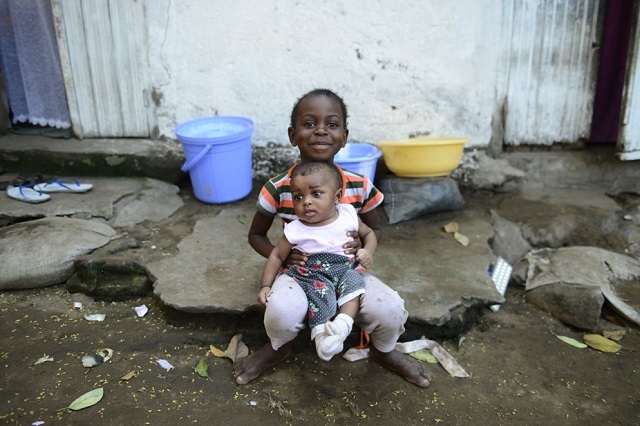
In 2013, an estimated 6.3 million children under five died, 2.9 million of them in the WHO African Region. This is equivalent to five children under 5 years of age dying every minute. Two thirds of these deaths can be attributed to preventable causes. A third of all these deaths are in the neonatal period.
Pneumonia, diarrhoea, malaria and HIV are the main causes of death in infants and young children. In the African Region, about 473 000 children die from pneumonia, 300 000 from diarrhoea, and a further 443 000 from malaria every year. In 2012, 230 000 new HIV infections were recorded among children under 5 years of age.
“Although tremendous progress has been made in identifying and treating infants and children with HIV, much remains to be done to scale-up and sustain effective prevention, care and treatment, especially of pneumonia and diarrhoea,” said Dr Matshidiso Moeti, WHO Regional Director for Africa.
Pneumonia is the single biggest killer of children worldwide, accounting for nearly one in seven deaths among young children, with an estimated over 950 000 deaths annually. Most of the deaths occur in resource-constrained countries, with 50% in sub-Saharan Africa.
Globally, diarrhoeal diseases account for nearly one out of every six deaths in children under 5 years of age, equivalent to over 578 000 deaths per year. Diarrhoeal disease occurs more commonly in HIV-infected people, with worse outcomes than in uninfected children. Persistent diarrhoea in particular is associated with a high risk of death in HIV-infected children. Administration of oral rehydration and zinc in combination with antiretroviral therapy (ART) and restoring immune function are critical for the treatment of diarrhoea in children with HIV.
“Undernutrition is another critical risk factor in most countries in the African Region, and nutrition and food security remains a fundamental challenge to child survival. Breastfeeding is one of the best ways to provide newborns, infants and young children with the nutrients that they need while protecting them against conditions like pneumonia, diarrhoea and undernutrition,” Dr Moeti added.
The World Health Organization (WHO) recommends that exclusive breastfeeding starts within one hour after birth and lasts until a baby is six months old. Continued breastfeeding and appropriate complementary foods should be made available for up to 2 years of age and beyond.
In mid-2013, WHO issued new guidelines for breastfeeding and the prevention of mother-to-child transmission (PMTCT) of HIV. These recommendations were intended for use in resource-poor settings in low-and middle-income countries.
One of the recommendations for PMTCT is to promote the use of ART in all pregnant and breastfeeding women. These recommendations also include providing ART - irrespective of one’s CD4 count - to all children under 5 years of age with HIV, all pregnant, and all breastfeeding women with HIV including their infants until they cease to breastfeed.
Health systems in Africa are often not able to adequately address the severe burden of childhood disease. Low total health expenditure with high out of pocket health costs hamper progress in child survival. Hence just as health can drive economic growth, ill-health can push people into poverty and make it very difficult for them to escape the vicious cycle of poverty and disease.
WHO will continue to work with governments and partners to strengthen health systems to reduce unacceptably high infant and child deaths in the African Region.
______________________________________________
For more information, please contact:
Technical contacts:
Dr Kasonde Mwinga; Tel: +472 413 9189; Email: mwingak@who.int
Dr Phanuel Habimana; Tel: +472 413 9407; Email: habimanap@who.int
Media contact:
Dr Cory Couillard; Tel: + 472 413 9995; Email: couillardc@who.int
